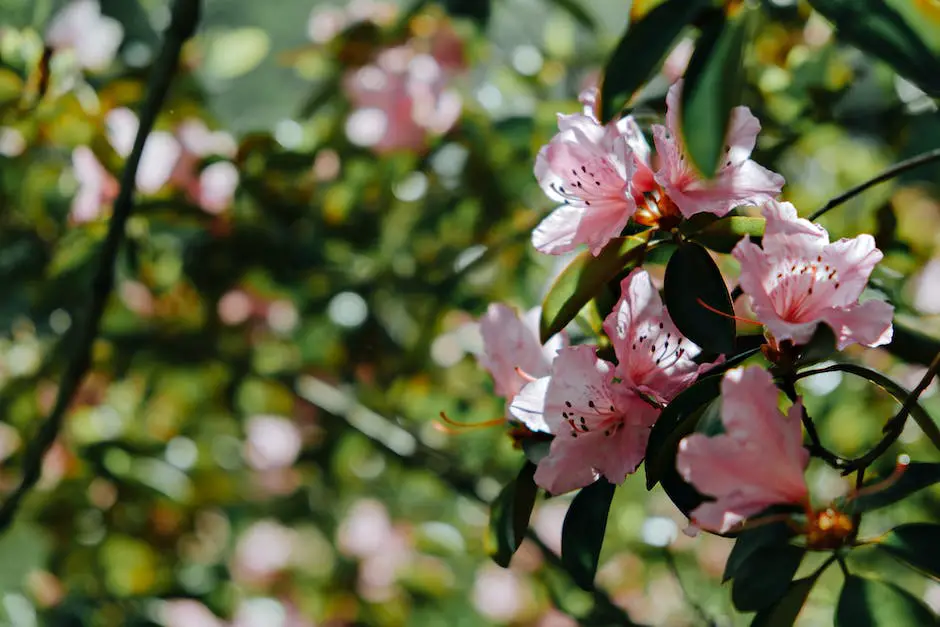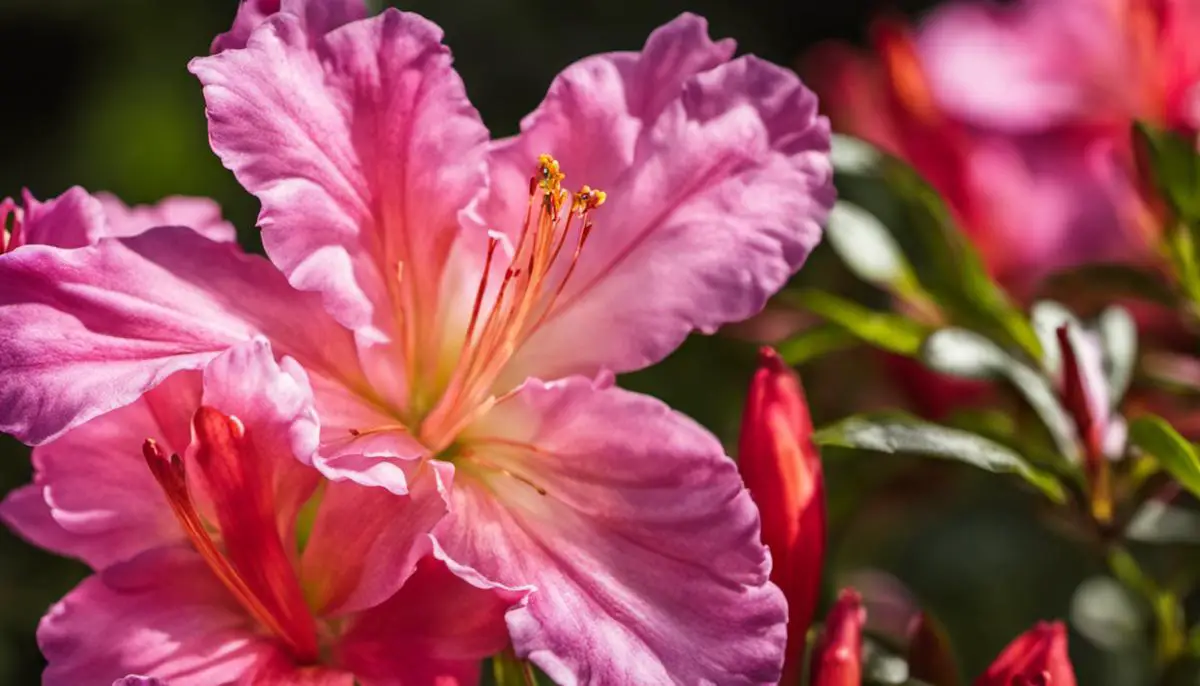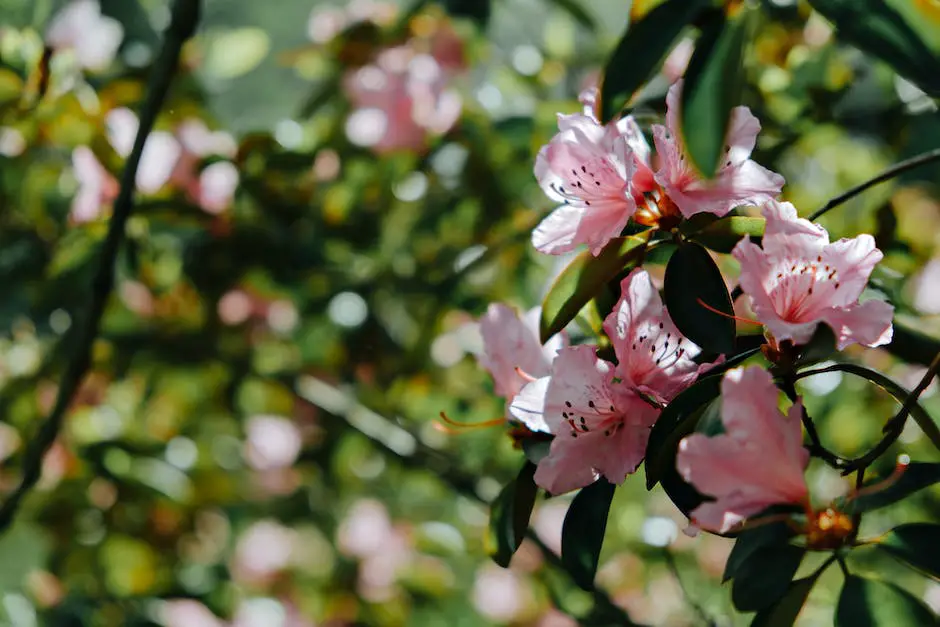Azaleas, a member of the Rhododendron family, exhibit an unrivaled beauty whether they express themselves as radiant trees or spectacular bushes. Each form, while undoubtedly azalea, carries its unique characteristics, growth patterns, and aesthetic appeals. This exploration will delve into these aspects, providing an in-depth comprehension of the distinguishing facets between azalea trees and bushes. Additionally, it will shed light on the factors impacting growth, the essential needs for plant care, and their applications in landscaping. This knowledge serves not only to broaden the understanding of these exceptional plants but also to provide practical, beneficial guides for those intending to nurture and cherish them.
Defining Azalea Trees and Bushes
Understanding Azalea Trees and Bushes
Azaleas are a vibrant and beautiful addition to any garden or landscape, either as trees or bushes. They belong to the family Ericaceae and the genus Rhododendron, which consists of both rhododendrons and azaleas. The classification of azaleas into trees or bushes is not botanical but based on their growth style and general appearance.
What Defines an Azalea Tree?
Azalea trees, also known as tree-form or standard-form azaleas, are not different species of azalea. They are simply normal azalea bushes that have been trained over many years to grow single trunk, similar to the form of a small tree. Tree azaleas are not typically found in the wild, they are created through patient horticultural practices that involve pruning and staking a single stem of a bush until it reaches the desired tree-like appearance. Azalea trees can reach 5 to 6 feet tall, depending on the species and the cultivar.
The Appearance of Azalea Trees
Azalea trees are easily distinguishable from azalea bushes due to their solitary, straight trunk and the bushy head of leaves and blossoms at the top. They often bear a resemblance to miniature trees and can be quite striking when in full bloom, exploding with a riot of colors that range from white and pink to red, orange, and purple.
Characteristics of Azalea Bushes
Azalea bushes on the other hand, generally have multiple stems that grow from the base of the plant. Bushes commonly reach 3 to 5 feet in height, although some varieties grow larger. Azalea bushes are typically larger and wider than their tree counterparts, sometimes spreading out over several feet.
Azalea Bushes Appearance
Azalea bushes are woolly, dense, and have a mounded appearance. The flowers can cover the entire plant in spring, offering a colorful display of orange, pink, purple, white, or red. The multitude of blooms on a bush azalea is a spectacle in itself when these plants are in full bloom.
Differences Between Azalea Trees and Bushes
Although both azalea trees and bushes are fundamentally the same plant, their primary difference lies in their physical form, the result of different growing and pruning procedures. To create an azalea tree, one must limit the plant to one main stem and remove all the lower limbs, training the plant to grow into a single-trunked standard or tree-like form. Conversely, for the azalea bush, gardeners allow the plant to grow naturally, maintaining its multiple stems and shrubby shape.
While the botanic differences between azalea trees and bushes are primarily horticultural creations, these physical differences have distinct impacts on how they are used in the landscape. Azalea trees can be attention-grabbing solitary presences in a garden, evoking the elegance of a miniaturized tree. Bush forms tend to form a backdrop or a landscape presence that serves as a fruitful base for the colorful performance of their abundant seasonal flowers.
In terms of maintenance, azalea trees require more care than azalea bushes due to their need for careful pruning and shaping. Bushes, on the other hand, can spread naturally and needs only straightforward pruning to control their size and shape if necessary.
Wrapping Up
The selection of an azalea tree or an azalea bush is a matter of individual preference and the particular objectives one has for their garden or yard. Both exhibit the innate elegance of the azalea species, enhancing the environment with their dynamic color and energy. The striking full blooms they produce are an eagerly awaited spectacle every spring.

Growth and Development
Digging Deeper: The Life Cycle and Growth Pattern of Azalea Trees and Bushes
Azaleas, widely known as a subspecies of Rhododendron, are preferred for their abundant and vivid blossoms making them a favorite among homeowners and garden designers alike. Despite this common affinity, distinguishing between azalea trees and bushes is crucial for understanding their growth pattern and life cycle.
Azalea bushes, by nature, occupy compact spaces, comfortably growing to a height between 2-8 feet depending on the species. They mostly thrive as evergreen or deciduous varieties, exhibiting a steady albeit slow rate of growth. Every year, these bushes sprout new branches and leaves, ensuring the bush retains its rounded silhouette. The bush initiates its flowering phase with the arrival of spring, offering a breathtaking floral display that spans several weeks.
Conversely, azalea trees are essentially large shrubs that are meticulously pruned and shaped to resemble a tree. These can ascend to a height of 8-15 feet, reliant upon the species and care provided. The trees, akin to the bushes, adorn themselves with a splendid burst of flowers every spring. Although paralleling the bush in terms of life cycles, the tree’s maintenance can be more labor-intensive due to the efforts needed to sustain its arboreal appearance.
Climate, Sunlight, and Soil Impact
Regardless of whether it’s a tree or a bush, the success of azalea plants largely depends on the environmental conditions. A temperate climate is ideal for azaleas, as they prefer cool temperatures and well-drained soil.
For suitable growth and development, both types of azaleas require substantial access to sunlight, but they also need some shade. Excessive sunlight can scorch the leaves, whereas too little sunlight can affect their vibrant blooming phase.
Another critical element in the growth of azaleas is the soil quality. Azaleas thrive best in well-draining, acidic soil rich in organic matter. The soil’s acidity should typically be around pH 4.5-6.0. Azaleas have shallow roots, requiring frequent watering, especially when the weather is hot and dry. However, poorly drained or waterlogged soil can lead to root rot, which can significantly impact their growth.
Examining Seasonal Changes in Azalea Trees and Bushes
Customarily, Azaleas experience two significant growth phases yearly- one shortly succeeding their bloom in spring, and another during the later part of summer or the commencement of autumn. The exact timing of these growth periods might fluctuate based on varying weather conditions and the geographical position. Accurate comprehension of these shifts can assist in the careful timing of tasks such as pruning and fertilizing. For instance, pruning should ideally be done immediately following the spring bloom, and fertilizers should be given at the onset of spring, just before the new growth sets in.
To sum it up, gaining insights into the life cycles and growth patterns of azalea trees and bushes, as well as the environmental elements influencing their progression, can equip gardeners and enthusiastic plant enthusiasts with the necessary knowledge to cultivate these splendid plants more efficiently.

Plant Care and Maintenance
Understanding Azaleas: Distinguishing Between Trees and Bushes
Azaleas, characterized by their brilliant and plentiful blossoms, belong to the Rhododendron family. They predominantly present themselves in two structures – trees and bushes. Both forms are celebrated for their aesthetic appeal and versatility in landscape design, but their maintenance needs can exhibit differences.
Watering Needs
The watering needs of azaleas, whether in tree or bush form, largely remain the same. They both require well-draining soil, as waterlogged soil can lead to root rot. The key is to keep the soil moist, not saturated. During hot and dry weather, both types may need additional watering, ideally early in the morning or late in the evening to prevent water loss due to evaporation.
Fertilization
Fertilizing azaleas can enhance their growth and bloom. Both tree and bush azaleas would benefit from a balanced slow-release fertiliser applied in late spring or early summer, the beginning of their growing season. Avoid fertilizing after mid-summer as this can promote late growth that might be damaged by winter frosts.
Pruning Techniques
Azalea trees and bushes have different pruning requirements. Bush azaleas are typically pruned after flowering, as they bloom on old wood – branches that have been on the bush since the previous year. Lightly trimming these plants helps to maintain their shape and encourage bushier growth.
Azalea trees, due to their height and structure, may require more specific pruning techniques for maintenance and aesthetics. Dead or dying branches should be removed and additional pruning could be performed to shape the tree, but caution must be taken not to inhibit next year’s blooms.
Disease Prevention
Both azalea trees and bushes are susceptible to a range of diseases, such as leaf gall, petal blight and root rot. To keep plants healthy, ensure they are planted in well-draining soil and watered correctly to avoid waterlogging. Regular inspection of trees and bushes can also help identify any potential issues early, enabling prompt treatment.
Conclusion
In conclusion, the key differences in care for azalea trees vs bushes primarily lie in their pruning needs due to structural variations. However, it is equally crucial to understand that both types share similar requirements in watering, fertilization, and disease prevention. By paying attention to these aspects, one can ensure the healthful growth and abundant blooming of these beautiful plants.
Please note that for specific inquiries on the care requirements or health concerns of azaleas, reaching out to your local horticulture expert or extension service is highly recommended. These individuals can provide valuable advice that is customized to your location and unique circumstances.

Landscaping Applications
Dissecting the Differences: Azalea Trees Vs. Bushes
Azaleas, a member of the Rhododendron genus, can be categorized into two main types: Azalea trees and Azalea bushes. Azalea trees, more formally known as standard azaleas, are grown to mimic the structure of a traditional tree with a single stem or trunk. Azalea bushes, on the other hand, feature numerous stems that originate from the ground.
Size and Shape of Azalea Trees and Bushes
In terms of size and shape, azalea trees tend to be taller than azalea bushes and can reach up to 10 feet in height, although there are smaller tree varieties available, commonly standing around 4 to 6 feet tall. They have a rounded canopy which can offer a bold statement in a garden landscape. On the other hand, azalea bushes are generally smaller, ranging from 2 to 6 feet in height and width. They have a mounded form which makes them a favorite for use as hedges, borders, and ground cover.
Azalea Color Variations
One of the most striking features of azaleas is their vibrant and colorful blooms. Both azalea trees and bushes offer a large palette of colors from white, pink, red, to more exotic purples and oranges. Some varieties flaunt bi-colored flowers adding to their spectacular bloom display. The flowering period typically starts in Spring, and depending on the variety, may last until early Fall.
Ideal Conditions for Azalea Trees and Bushes
Azaleas, whether tree or bush, thrive well in moderately acidic, well-drained soil and partially shaded areas. However, they can tolerate full sun if the soil is consistently kept moist. They’re considerably resistant to pests and diseases but must be protected against harsh, windy conditions as it can easily suffer from windburn.
Landscaping Applications
Azalea trees, due to their height and form, can be used as a focal point in garden design. They are often placed near the entrance of homes or in the center of a garden to draw attention. They can also be planted in rows to create a visual barrier or to add height to a border.
Azalea bushes, however, are frequently used for ground coverage and to create low borders. Their thick foliage and stunning blanket of blooms can easily fill empty spaces and add texture to a garden landscape. They’re best used in mass plantings for creating dramatic color displays or mixed with other shrubs to create a layered effect.
Overall, both azalea trees and bushes exhibit a stunning display of colors and have versatile uses in landscaping. The choice between the two often comes down to the specific design and space requirements of the garden.

Through understanding the intricate details that distinguish azalea trees from bushes, one can truly appreciate the botanical nuances and creative landscaping possibilities provided by these fascinating species. Their distinct growth patterns and care requirements denote a testament to the incredible adaptability and resilience of nature, adding another layer of admiration. These pieces of knowledge equip individuals with the necessary wisdom to care and cultivate these plants to their full potential – whether they grace a garden as a stunning azalea tree or a captivating azalea bush. Ultimately, recognizing and celebrating these remarkable differences invigorate a further enriched appreciation for the natural world and its captivating botanic diversity.




